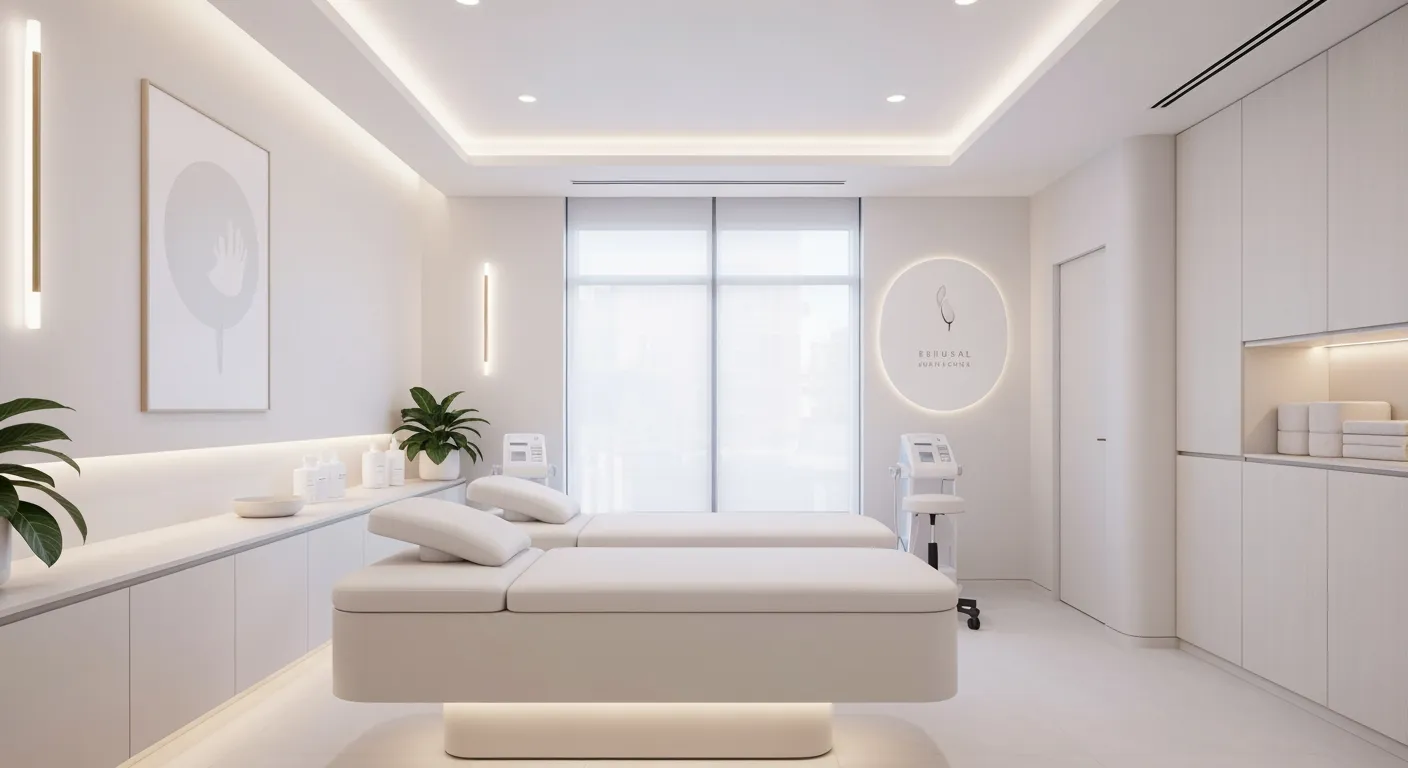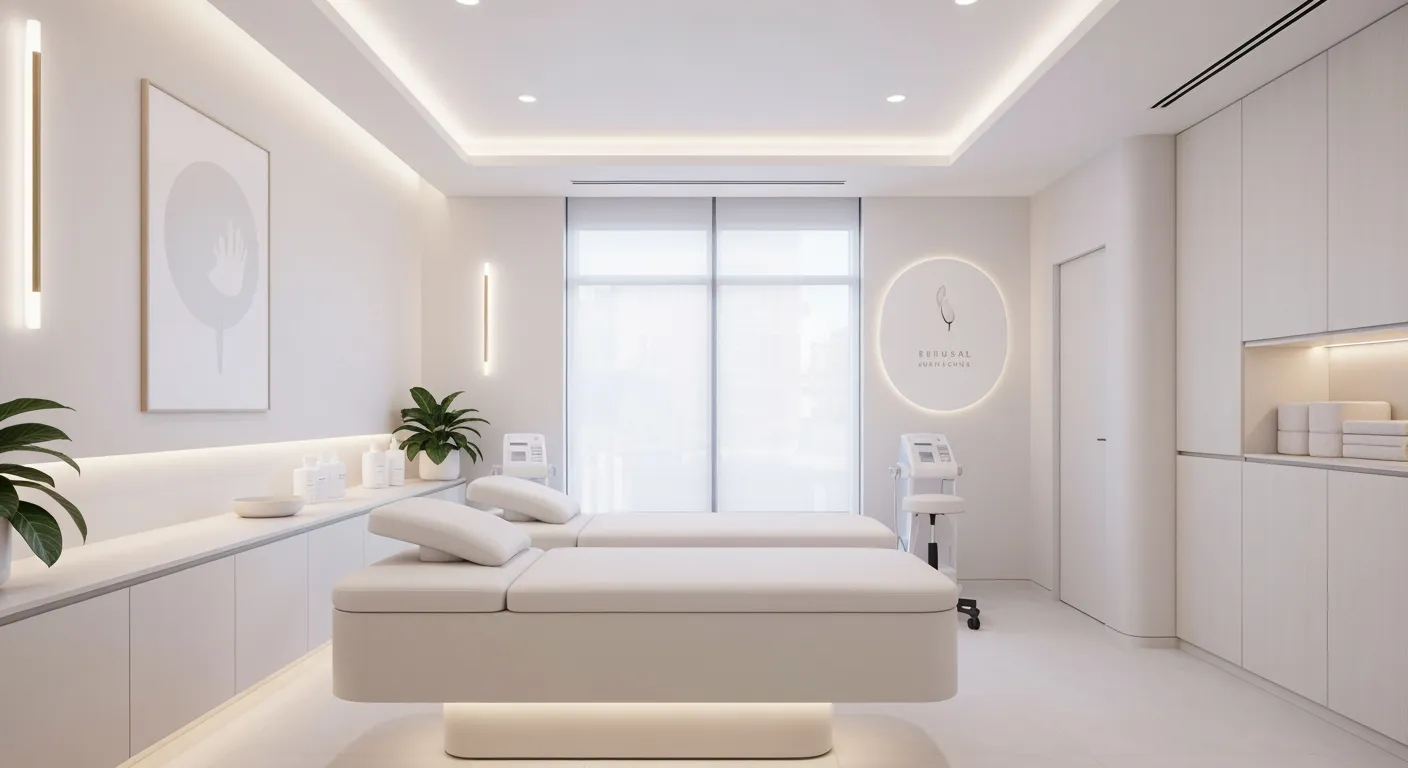
November 14, 2025
Breast reconstruction options after mastectomy: Your guide
Discover breast reconstruction options after mastectomy: implants vs flap, timing, and recovery tips to help you decide.
Nov 14, 2025

Non-surgical skin tightening procedures utilize targeted energy sources such as ultrasound, radiofrequency (RF), or a combination including intense pulsed light (IPL) to gently heat the deeper layers of the skin. This controlled thermal effect triggers the skin’s natural healing response, stimulating the production of collagen and elastin—key proteins responsible for skin firmness and elasticity.
The application of energy heats skin tissues at specific depths, promoting collagen contraction and prompting new collagen synthesis. Over time, this enhances skin tone, improves texture, and reduces sagging. Different FDA-cleared technologies offer various options, including ultrasound treatments like Ultherapy®, RF devices such as Thermage®, or combination devices that address multiple concerns simultaneously.
Non-surgical skin tightening is suitable primarily for individuals experiencing mild to moderate skin laxity. The procedures are minimally invasive, usually require no downtime, and are generally safe when performed by licensed and trained professionals—licensed aestheticians under physician oversight or qualified cosmetic surgeons. These treatments are not recommended for advanced sagging requiring surgical intervention.
Compared to surgical facelifts or lifts, non-surgical skin tightening offers the advantage of avoiding incisions and scars, with reduced risk and shorter recovery times. Although results build gradually over several months and may require repeat treatments, the overall experience is convenient and less costly. These procedures can effectively postpone the need for surgery, enhancing natural skin firmness and boosting patient confidence with a comfortable and safe approach.

Non-surgical skin tightening treatments employ targeted energy such as ultrasound skin tightening and radiofrequency (RF) to heat the deeper layers of the skin. This heat penetration stimulates the natural production of collagen and elastin—two essential proteins responsible for the skin's firmness, elasticity, and youthful appearance.
Devices designed for non-invasive skin tightening precisely deliver controlled heat to specific depths beneath the skin surface, often reaching the middle to deeper dermal layers. This process triggers a natural wound healing response that renews and remodels collagen fibers, resulting in firmer and tighter skin texture over time.
By stimulating collagen and elastin synthesis, these treatments help improve skin tone, reduce mild sagging, and enhance overall skin resilience. The biological response typically unfolds gradually, with noticeable improvements becoming evident within two to three months and lasting up to a year or longer with periodic maintenance.
Common FDA-cleared technologies include:
These technologies are FDA-cleared, ensuring safety and efficacy when performed by trained professionals. They are particularly effective for treating mild to moderate skin laxity across various areas including the face (jawline, brow), neck, chest, abdomen, arms, and thighs. By avoiding invasive surgery, these non-surgical options provide patients with a safe, convenient approach to refresh and enhance skin appearance.
Overall, non-surgical skin tightening leverages advanced energy-based skin tightening technologies to promote natural skin rejuvenation, enabling patients to achieve firmer, more youthful skin with minimal downtime and long-lasting benefits.

Common technologies include ultrasound devices like Ultherapy® and Sofwave™, radiofrequency (RF) devices such as Thermage®, Profound RF, and Morpheus8®, and combination treatments using intense pulsed light (IPL) with RF, as seen in devices like Venus Versa® and VelaShape®. These technologies are FDA cleared skin tightening technologies and offer safe, effective options for skin tightening.
Ultrasound treatments use focused sound waves deep beneath the skin surface to stimulate collagen and elastin production, improving skin firmness and texture. Ultherapy® targets areas such as the brow, chin, neck, and chest, treating early signs of aging with results appearing gradually over 2 to 3 months and lasting about a year.
Sofwave™ is another ultrasound technology that delivers focused heat approximately 1.5 mm below the skin surface. It is ideal for mild to moderate skin laxity on the jawline, neck, and brow, offering immediate improvements that continue to develop over 3 to 6 months with no downtime.
RF treatments use electromagnetic waves to heat the deeper layers of the skin, stimulating collagen regeneration for firmer, smoother results. Thermage® is a popular option for treating the face, neck, and body, often requiring a series of treatments for optimal effects lasting up to a year or more.
Profound RF and Morpheus8® combine microneedling with RF energy to enhance collagen stimulation, improving skin texture and laxity in various areas such as the face, neck, hands, and body. Learn more about Profound RF treatment and Morpheus8® treatment.
Combining IPL's light energy with RF's heat allows simultaneous treatment of multiple skin concerns, including tightening and pigmentation correction. Devices like Venus Versa® and VelaShape® are effective for larger body areas such as the abdomen, arms, and legs, with minimal discomfort and little to no downtime.
These treatments address skin tightening for mild to moderate laxity primarily on the face, neck, chest, and body areas including arms, abdomen, and thighs. Typical ultrasound or RF sessions last between 30 and 90 minutes depending on the device and treatment area. Results develop gradually over several months, often requiring multiple sessions and maintenance treatments for sustained benefits.

Non-surgical skin tightening procedures generally take between 30 and 90 minutes per session, depending on the treatment area and technology used. Patients often report mild discomfort or warmth during the procedure, which is usually well tolerated without the need for anesthesia. Treatment sessions are typically performed in an outpatient setting, allowing patients to resume normal activities immediately with little to no downtime.
These treatments are considered safe when performed by qualified providers. Common mild side effects include temporary redness, swelling, and slight tenderness at the treatment site, resolving typically within 24 hours. Rare adverse events, such as burns, are preventable by careful patient selection and adherence to appropriate protocols. See more about Skin Tightening Procedure Safety.
Non-invasive skin tightening treatments can be safely administered by licensed aestheticians or nurses under the supervision of a licensed physician. Procedures involving more invasive techniques or small incisions require a certified cosmetic or plastic surgeon. Ensuring treatments are conducted by trained professionals minimizes risks and enhances outcomes.
Ideal candidates have mild to moderate skin laxity and seek gradual yet natural improvements in firmness and texture without surgery. These treatments are especially effective for early signs of aging on the face, neck, chest, and moderate laxity on body areas like arms and abdomen.
Individuals with significant or advanced sagging skin due to aging, pregnancy, or major weight loss may find non-surgical options less effective. In such cases, surgical intervention is often recommended to achieve more dramatic and lasting results.
Non-surgical skin tightening is suitable for individuals with mild to moderate skin laxity who seek gradual improvement without surgery. It is not effective for severe sagging skin. Procedures should be performed by licensed professionals with physician supervision when required.
Non-surgical skin tightening treatments produce gradual improvements in skin firmness and texture. Patients usually notice visible changes developing over a period of 2 to 6 months following their procedures as collagen and elastin stimulation increases. These results provide a natural-looking enhancement that helps improve skin tone, reduce mild sagging, and smooth fine lines.
The effects of these treatments typically last up to one year or longer, depending on individual skin conditions and the specific technology used. Because collagen remodeling is a continuous process, periodic maintenance treatments are recommended to sustain the benefits.
Multiple sessions are often necessary to achieve the best possible outcome, especially for those with moderate skin laxity. These sessions can be spaced out as advised by the treating physician or aesthetician.
Importantly, non-surgical skin tightening can serve as an effective strategy to delay or postpone more invasive surgical interventions like facelifts. By improving skin quality and firmness early on, patients may extend the time before surgery becomes necessary, enjoying a rejuvenated appearance with minimal downtime and less risk.
Patients are encouraged to consult with certified cosmetic surgeons to determine a personalized treatment plan, ensuring results align with their aesthetic goals and to discuss maintenance schedules for long-term satisfaction.
Radiofrequency (RF) microneedling is an advanced method that enhances collagen and elastin production by delivering radiofrequency energy through ultra-fine needles deep into the skin layers. Genius RF® is a leading technology in this category, offering precise and customizable treatments suitable for all skin tones. Patients typically notice improvements in skin laxity, texture, and firmness across various body areas within weeks, with long-lasting results extending up to two to three years.
Yes, minimally invasive treatments bridge the gap between non-invasive procedures and surgical ones. Thread lifts, like the Silhouette InstaLift®, use dissolvable PLGA threads inserted under the skin to physically lift sagging tissue while simultaneously promoting collagen synthesis during the threads' absorption. This approach provides a noticeable lift particularly for the lower face, with minimal downtime and without requiring large incisions.
Combining treatments such as RF microneedling with other modalities or integrating IPL with radiofrequency allows clinicians to target multiple skin concerns simultaneously. This synergy can improve skin tone, texture, and tightness more effectively than any single treatment alone. For example, IPL/RF devices address pigmentation and mild sagging while RF microneedling stimulates collagen from within, resulting in firmer, smoother skin.
Truly non-invasive procedures do not breach the skin's surface and include ultrasound or radiofrequency devices that heat tissues to trigger collagen production gradually, with no incisions or injections. Minimally invasive procedures, such as RF microneedling and thread lifts, involve controlled penetration of the skin through needles or fine sutures, offering more immediate and pronounced lifting effects. Both approaches prioritize patient safety and aim for natural-looking results with reduced risk compared to surgery.
Non-surgical skin tightening treatment costs vary depending on the technology used, the area treated, and the number of sessions required. Here is an overview of average costs:
| Treatment Type | Average Cost (USD) | Typical Treatment Areas |
|---|---|---|
| Ultrasound (e.g., Ultherapy®) | $993 | Brow, chin, neck, chest |
| Radiofrequency (e.g., Thermage®, FaceTite) | $755 - $1,230+ | Face, neck, hands, body |
| Intense Pulsed Light (IPL) | $126 | Pigmentation, sun damage, broad skin areas |
| Laser Resurfacing | $1,815 | Wrinkles, scars, age spots |
| Thread Lifts (e.g., Silhouette Soft®) | $1,761 | Lower face and jawline |
Costs may increase with multiple sessions as optimal results typically require 2 to 6 treatments. Treatment areas that cover larger body regions such as the abdomen, arms, or thighs may also influence pricing.
Several factors affect the overall cost and approach, including:
Many providers offer financing plans to help manage treatment costs. Options like CareCredit® allow patients to pay over time with flexible monthly installments, facilitating access to non-surgical skin tightening without upfront financial strain.
An initial consultation with a certified cosmetic surgeon is essential to assess individual skin conditions, determine the most suitable treatment or combination, and set realistic expectations. Expert guidance ensures safe, effective treatment planning tailored to each patient's needs and aesthetic goals.
Non-surgical skin tightening procedures provide significant advantages over traditional surgical options, particularly for patients seeking effective skin rejuvenation without invasive intervention.
One of the primary benefits is the avoidance of incisions and resultant scars. Unlike surgical facelifts or tightening procedures, these treatments stimulate collagen and elastin production using energy-based devices such as ultrasound , radiofrequency, or combination IPL and RF therapies. This non-invasive skin tightening means there are no surgical risks such as infections or extended recovery periods.
Treatments typically occur in-office and last between 30 to 90 minutes, with little to no downtime required. Patients can resume their normal activities almost immediately, making these procedures convenient and less disruptive to daily life.
In terms of outcomes, non-surgical skin tightening gradually improves skin tone, texture, and firmness, reducing early signs of aging such as wrinkles and skin tightening for mild to moderate laxity. The results develop naturally over weeks to months and can last up to a year or more with maintenance treatments.
The safety profile of these procedures is excellent when performed by trained, licensed providers under appropriate medical supervision. Common side effects like mild redness or swelling resolve quickly, and serious complications are rare.
Beyond the physical improvements, patients often experience enhanced self-confidence and satisfaction with their appearance. The natural and subtle enhancements promote a refreshed look without the risks and downtime of surgery.
Overall, non-surgical skin tightening offers a patient-friendly option that balances effectiveness, safety, and convenience for those aiming to maintain or rejuvenate their skin’s youthful appearance.
Non-surgical skin tightening techniques such as ultrasound (Ultherapy®), radiofrequency (Thermage®, Profound RF), and combination therapies using IPL and RF provide safe and effective options. These treatments stimulate collagen and elastin production to improve skin tone, texture, and firmness gradually, typically over 2 to 6 months.
A personalized approach is essential. Consultation with a certified cosmetic surgeon or qualified provider ensures the treatment plan matches individual skin conditions, goals, and medical history for optimal results.
These procedures are best suited for patients with mild to moderate skin laxity, offering a non-invasive alternative to surgery that can delay or reduce the need for more invasive interventions.
Choosing licensed and experienced providers is critical to safety and efficacy. Patients should maintain realistic expectations, understanding that results develop over time and may require maintenance treatments to sustain improvements.

November 14, 2025
Discover breast reconstruction options after mastectomy: implants vs flap, timing, and recovery tips to help you decide.

November 14, 2025
Exploring Effective Non-Surgical Options for Skin Tightening

November 14, 2025
Essential Guidelines for a Restorative Post-Surgery Journey